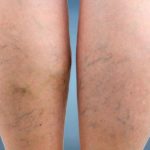Majority of aortic aneurysm has no symptoms and it is usually detected incidentally through investigations of other conditions on ultrasound scan or CT scan.
Aorta is the main trunk blood vessel coming out of the heart. It starts from the chest and then goes to the abdomen & pelvis. Then it splits off into two main vessels to supply the legs on either side. Along the course of the aorta, it gives off many branches to various organs in the chest and abdomen. This include the stomach, gut, liver, kidney, spine, spleen and bladder.
Aortic aneurysm is an abnormal dilatation of any part of the aorta. The dilatation frequently occurs in the abdomen below the kidney arteries. This is known as Infrarenal abdominal aortic aneurysm. This is the most common aneurysm which occurs in the human body.
It can also occur in the chest portion of the aorta and this is known as thoracic aortic aneurysm. This is normally 10 times less common than aortic aneurysm.
In some cases, it can happen in both chest and abdominal portion of the aorta and it’s called thoraco-abdominal aortic aneurysm. This may be the worst and most serious aneurysm to acquire as the treatment is very complex.
Symptoms of aortic aneurysm?
In the western world aortic aneurysm is usually detected by screening from individuals over 60 years old.
If symptoms occur, the aortic aneurysm is usually very big and likely to burst very soon.
The symptoms are as follow:
- Abdominal pain
- Back pain
- Blue toes
- Pain on walking
- Abnormal and pulsatile swelling in the tummy.
What are the factors associated with or leading to aortic aneurysm?
Aortic aneurysm is part of a spectrum of peripheral vascular disease. Smoking, high blood pressure, high blood cholesterol as well as family history is all associated with the development of aortic aneurysm. It is more common in men than women. ( ratio 6:1)
Connective tissue diseases whereby the elasticity element of the blood vessel wall is altered, also associated with aortic aneurysm formation. This happens in both Marfan syndrome and Ehlers-Danlos Syndrome.
Treatment options for aortic aneurysm
Aortic aneurysm is surgical condition. Once it reaches a threshold size of 5.5 cm diameter, it will require surgery. This can be done by classical open surgery where the disease portion of the aorta is replaced by artificial graft. The history of this operation goes back over 60 years ago.
In the last 20 years or more, the repair of aortic aneurysm can be done by using a stent to exclude the aneurysm. This is called endovascular stenting (key hole method). The advantage of this is the patient can recover faster from the procedure and normally associated with less complications immediately post-surgery. However, the advantage in the long term, is offset by the stent migration and leakage(endoleak) in a very small portion of patients (1 to 5%).
Patients who have an aneurysm less than 5.5cm normally don’t need an operation and should be monitor by ultrasound scan at regular intervals until 5.5cm diameter is reached.
What happens if I leave the aortic aneurysm untreated?
When aneurysm is small, normally less than 1% chance that it will burst. However, once it reach5.5cm diameter, the risk of bursting will increase exponentially. For example, a 6 cm aneurysm will have a 10 % risk of bursting per year where as an 8 cm aneurysm will have 40% risk of bursting.
When the aneurysm burst, majority of people (over 95%) will not make it to the hospital and will die at home. However, if they make it to emergency department, 50 % percent may not make it after surgery. There is a significant difference in contrast if the surgery is done before rupture and the risk can be as low as 1%.
Dr Wong is highly regarded for his specialised clinical interests and skills in a wide range of vascular conditions.









